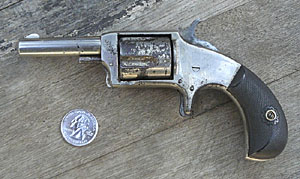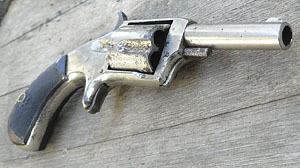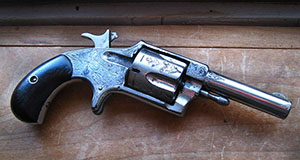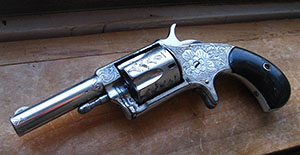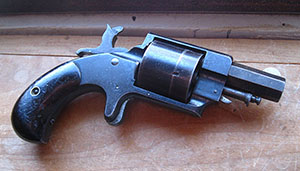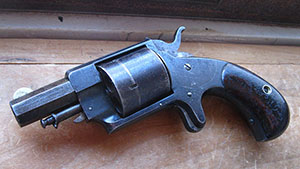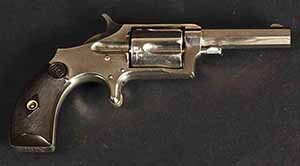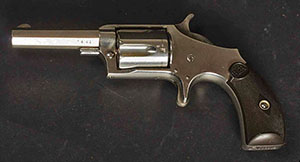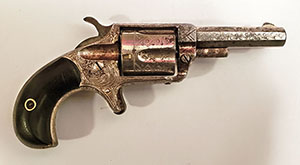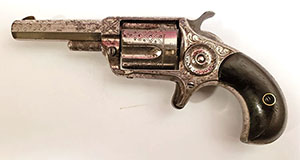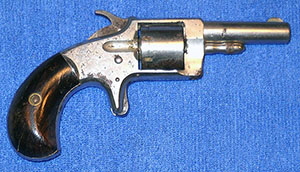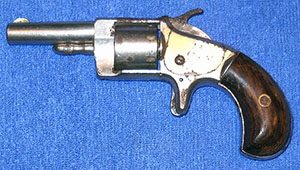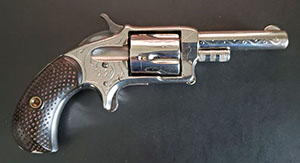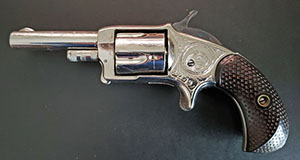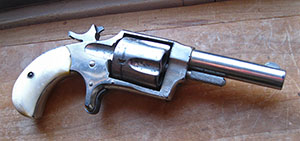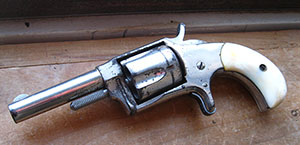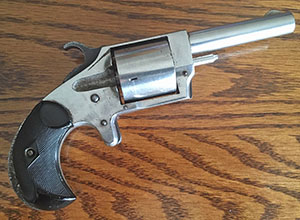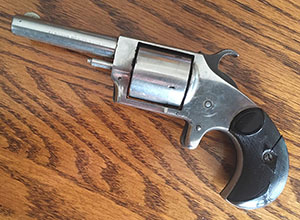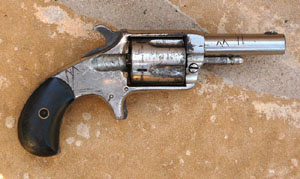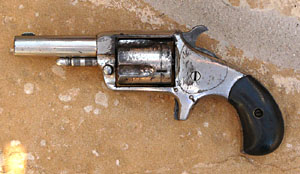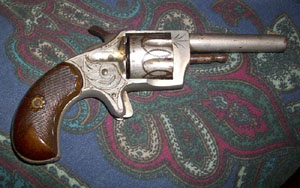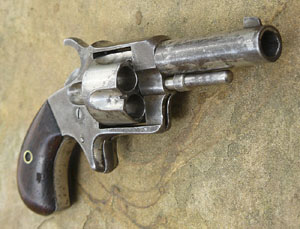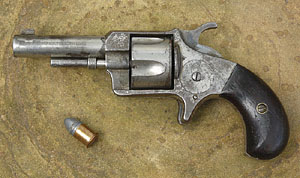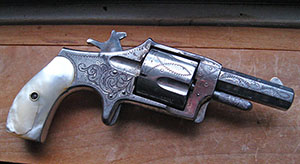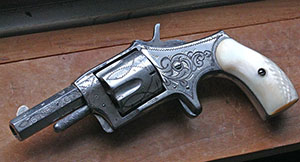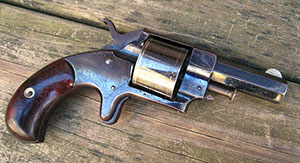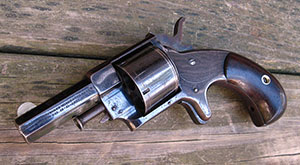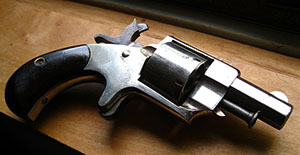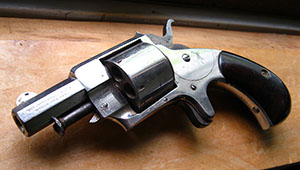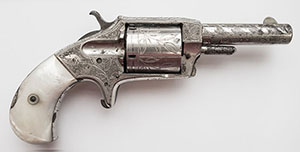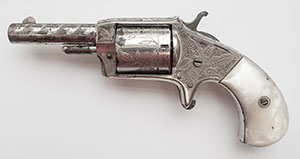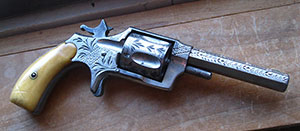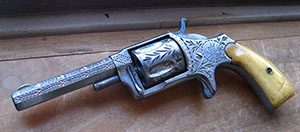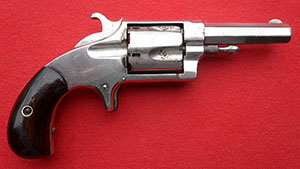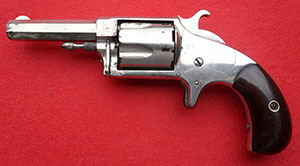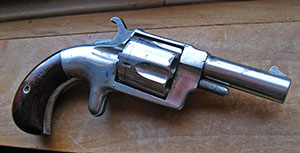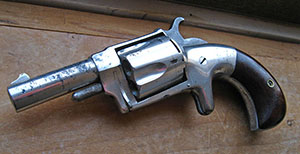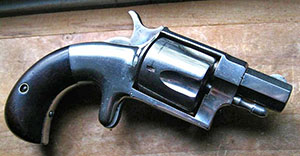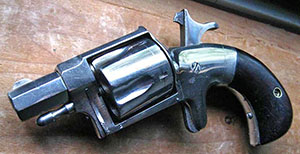|
Suicide Special Revolvers
by Ed Buffaloe
|
List of Trade Names
(not comprehensive):
Acme, Aetna, Alaska, Alert, Alexis, Alexia, American, American Boy, American Eagle, Aristocrat, Aubrey, Avenger, Bang Up, Bengal, Big
Bonanza, Bismark, Blue Hound, Blue Jacket, Boys Choice, Brutus, Buffalo Bill, Bull Dog, Capt. Jack, Caruso, Challenge, Champion, Chicago Ledger, Chichester, Chieftain, Columbian, Comet, Commander,
Constant, Continental, Conqueror, Cowboy, Cowboy Ranger, Creedmore, Crescent, Crown, Crown Jewel, Czar, Daisy, Daniel Boone, Dead Shot, Defender, Defiance, Despatch, Double Header, Dreadnought, Eagle,
Eagle Arms Co., Earlhood, Earthquake, Elector, Electric, Emperor, Empire, Empress, Encore, Enterprise, Eureka, Excelsior, Express, Fashion, Faultless, Favorite, Favorite Navy, Fisher, Frontier, Gem,
Governor, Guardian, Gypsy, Half Breed, Hard Pan, Hero, Hecla, Hood, Imperial, International, Iroquois, Jewel, J.H. Johnston, Joker, Kaiser, Kentucky, King, King Pin, Kittemaug, Knockabout, Ladies
Companion, Ladies Pet, Lakeside, Leader, Liberty, Lifelong, Lion, Little Giant, Little John, Little Joker, Little Pet, Little Scott, Lone Star, Long Range, Long Tom, Marquis of Lorne, Metropolitan
Police, Midget, Mohawk, Mohegan, Monitor, Monarch, Mountain Eagle, My Companion, Napoleon, Nero, Never Miss, New Baby, Newport, Nonpareil, Non-XL, Norwich Falls, Odd Fellow, O.K., OK, Old Hickory,
Orient, Our Own, Panther, Paragon, Paralyzer, Parole, Path Finder, Patriot, Peace Maker, Peerless, Penetrator, Pet, Phoenix, Pinafore, Pioneer, Prairie King, Premier, Princess, Protector, Queen, Ranger,
Rattler, Red Hot, Red Jacket, Reliable, Reliant, Retriever, Robin Hood, Rob Roy, Rover, Royal, Rupertus, Russian, Ryan, Ryan’s New Model, Safe Guard, Savage, Scott, Scout, Secret Service, Senator,
Sentinel, Smoker, Smokey City, Southron, Spit Fire, Spitfire, Splendor, Spy, Star Leader, Sterling, Striker, Success, Superior, Swamp Angel, Terrier, Terror, Tiger, Tower’s Police Safety,
Tramp’s Terror, Triumph, Trojan, True Blue, Tycoon, Uncle Sam, Union Jack, Union NY, Unique, Veiled Prophets, Venus, Veteran, VETO, Victor, Victoria, White Jacket, White Star, Whitney, Wide Awake,
William Tell, Winfield, Winner, Wonder, XL, XLCR, Yankee Boy, You Bet, Young America.
List of Manufacturers
(not comprehensive):
Bacon Arms Company, E.L. Dickinson, Forehand & Wadsworth, Harrington & Richardson, Hood Firearms Company, Hopkins &
Allen, Iver Johnson, Lee Arms Company, J.M. Marlin, Norwich Arms Company, Osgood, Prescott, Reid, Whitney.
|
|
The term “suicide special” was coined by Duncan McConnell in an article in the American Rifleman of February 1948. In 1958 Donald Blake Webster wrote a book entitled Suicide Specials, now long out of print. The name was given to a class of small,
(usually) cheap revolvers that were made in profusion between about 1870 and 1890. The classification is rather loosely defined, often in negative terms. Donald Webster has
enumerated the following criteria for suicide specials:
- Single action revolver
- Solid frame
- Sheath or spur trigger
- Most are rimfire only, in one of five calibers: .22, .30, .32, .38, and .41 (.30 is rare)
- Electroplated with nickel (95%)
- No break-open frames or swing-out cylinders
- No extractors or ejectors
- No hinged loading gates
- No safety features
- No serial numbers (or serial number hidden under grips)
- Most carried a trade name, not the actual manufacturer’s name
Despite the fact that most cities forbade the open carrying of weapons, late 19th Century America was a time and place where almost everyone owned a gun, and many carried them concealed.
The average person couldn’t necessarily afford a Remington, Colt, or Smith & Wesson, so there was a thriving market for cheap pistols. With the expiration in 1869 of the Rollin White
patent on bored cylinders, held by Smith & Wesson, a world of opportunity was opened up for small arms companies, and the public eagerly embraced their products.
The market for really small pocket revolvers was initially created by Smith & Wesson with their 1st Model .22 short revolver, which appeared in 1857, and the 2nd Model .32
rimfire, which appeared in 1861. Colt, Remington, and Whitney also eventually made a few small pocket models, but none of them were in production for very long because they simply
couldn’t compete with the cheaper guns.
Donald Webster is careful to emphasize that many of the suicide specials were poorly made of cheap metal and weren’t particularly safe to shoot when they were made, let alone today.
The only rimfire ammunition still in production today is .22 caliber, but it is much too powerful to be shot in old suicide specials (with the possible exception of CB caps). Most of
these guns are purely for collecting, not for shooting.
Also, as a result of being poorly made, many of the suicide specials that still exist are not in very good condition. In the best of storage situations, some of them can deteriorate even without
being handled. This is particularly true of the cheap nickel plating used on most of them.
While I have emphasized that most of these guns were cheaply made, there were notable exceptions. In particular, Forehand and Wadsworth and Iver Johnson made very fine weapons that were not cheap.
My intention here is not to write an exhaustive article on suicide specials, but simply to outline the basics on the guns and to add photographs of my own guns as I collect them. If you have a
suicide special and don’t mind sharing a photograph, I would be happy to publish it here.
 |
 |
 |
 |
 |
 |
 |
 |
 |
|
Defender
|
|
|
|
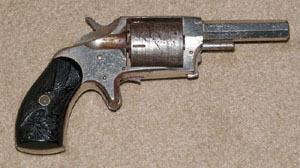 |
|
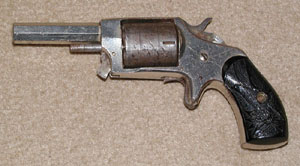 |
|
|
|
|
|
The Defender was manufactured by Johnson & Bye (later Iver Johnson) from 1873-1888. There were three different frame sizes for both square butt and birds head grip models. The small frame
was chambered for .22 rimfire; the medium frame was chambered for .32 rimfire; and the large frame was chambered for .38 or .41 rimfire. Serial numbers for each frame size and model started at 1
and ran to 99,999, then started over again. These were all smooth bore guns. Defender is the most common brand name, but Johnson & Bye also made the same guns under other names, including
Eagle, Encore, Eureka, Favorite, Favorite Navy, Lion, Smoker, Old Hickory, and Tycoon. Pearl and ivory grips were available by special
order, as were longer barrels.
There was a second series of guns made by Johnson & Bye from 1889-1899 that had rifled barrels and redesigned and improved lockwork. These were sold as the Defender 89. “Defender 89” was stamped on the topstrap and molded into the hard rubber grips.
|
|
|
 |
 |
 |
 |
 |
 |
 |
 |
 |
|
Eureka No. 2
|
|
|
|
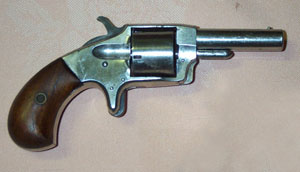 |
|
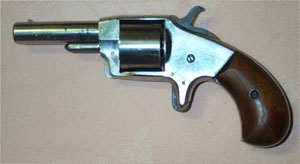 |
|
|
|
|
|
The Eureka No. 2 was a five shot revolver in .32 rimfire that was manufactured by Johnson & Bye (Iver Johnson and Martin Bye) sometime in the period between 1871 and 1899. The same revolver was
manufactured under various trade names, the most common being Defender, others being Defender 89,
Eagle, Encore, Favorite Navy, Lion, Smoker, Old Hickory, and Tycoon. The .32 rimfire shown here was the medium frame, but the gun was also available in a small frame .22 and a large frame .38 or
.41 caliber. All have serial numbers of five digits or less. Most have three inch barrels and bird’s head grips made of rosewood, or square butts with hard rubber grips. Longer
barrel lengths were available, as were ivory and mother of pearl grips.
|
|
|
 |
 |
 |
 |
 |
 |
 |
 |
 |
|
Hood Firearms Company .32 Rimfire
|
|
|
|
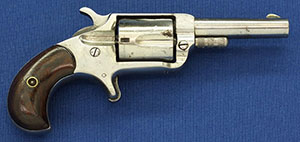 |
|
|
|
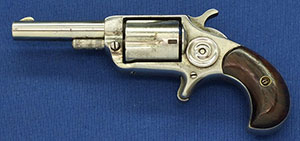 |
|
|
|
|
|
This is a five-shot revolver with a rifled barrel. It is marked on top of the barrel “HOOD F.A. CO. PAT. APR. 6. 1875”. The patent was filed on March 15, 1875 by Freeman W. Hood, and patent number 161,615 was granted on April 6, 1875. According to Webster, Hood formed his company in 1870, but also “...controlled the Norwich Arms Co. and the Norwich Lock Manufacturing Company, both of which made Suicide Specials. In addition he probably had a considerable...interest in the Continental Arms Co., and the Bacon Manufacturing Co., both of Norwich, as well as an undetermined interest in outside firms.” Other Hood patents include 160,192 for a cylinder pin lock, and 174,731 for a lockwork mechanism “...to securely lock the pawl when the hammer is placed in the cocked position...”
|
|
|
 |
 |
 |
 |
 |
 |
 |
 |
 |
|
Napoleon
|
|
|
|
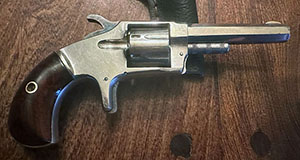 |
|
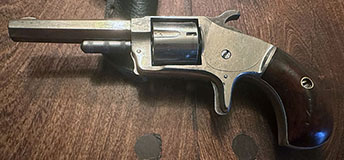 |
|
|
|
The Napoleon was made by the Ryan Pistol Manufacturing Co. Donald Webster describes the Napoleon as follows: “The overall length is 6-15/16 inches. The cylinder is fluted with the locking notches to
the rear. A notched raised lip in the topstrap serves as a rear sight, the front sight is a brass half-disc blade. The frame is solid, the grip frame saw-handle square butt, and the grips white bone. The
cylinder pin release is a push-in type blade at the forward end of the frame, with some models having a cylinder pin which unscrews. Some types of this arm have the round nut for the hammer as a
sideplate. The finish is nickeled, the hammer and trigger case hardened.” Webster describes the gun in .32 rimfire, but the gun shown here is in .22 short. It has a round butt, with rosewood grips.
The lockwork is similar to the Smith & Wesson No. 1. The barrel is 2½ inches, the overall length 6¼ inches, and the weight is 8.6 ounces (244 g.). This example has the serial number stamped
under the barrel, on the hammer, on the frame under the grips, and on each grip plate.
|
|
|
 |
 |
 |
 |
 |
 |
 |
 |
|
Trojan
|
|
|
|
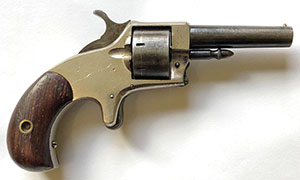 |
|
|
|
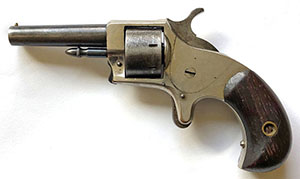 |
|
|
|
|
|
The Trojan revolver is not listed in Webster’s book, Suicide Specials, but the gun appears to be identical to one shown in Freeman W. Hood’s U.S. patent 174731 of 1876. Other Trojan pistols, nearly identical to this one except with a blade front sight, have been associated with the Bacon Manufacturing Company. Webster makes the following observations: “The Bacon company suspended production in 1888 and sold off most of the inventory on hand. Examination of a great number of Hood and Bacon Suicide Specials has given me the strong suspicion that the two firms coordinated in exchange of patents and other physical features.” Of the Hood Firearms Company he says: “There is only one revolver known which was marked with the Hood name, and as a result, the firm has generally been considered a shoe-string operation. Actually it was a near monopoly. Hood directly controlled the Norwich Arms Co. and the Norwich Lock Manufacturing Company, both of which made Suicide Specials. In addition he probably had a considerable, possibly controlling, interest in the Continental Arms Co. and the Bacon Manufacturing Co., both of Norwich, as well as an undetermined interest in outside firms.”
|
|
|
|
|

